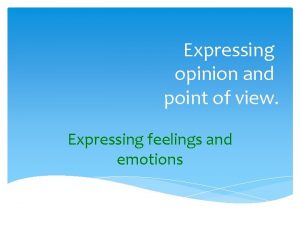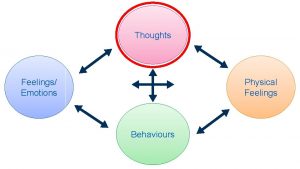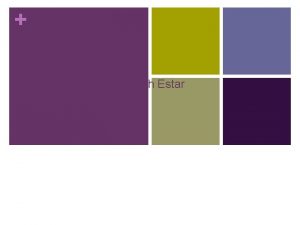Home learning lesson Expressing feelings 1 home learning













- Slides: 13

Home learning lesson: Expressing feelings 1

home learning: Expressing feelings 2

We are learning about expressing feelings We will be able to: name a range of feelings and emotions match feelings to a scale of intensity and identify strong feelings describe different feelings and how they are experienced in the body recognise why it is important for people to express their feelings 3

Expressing feelings: What’s our starting point? Make a ‘feelings’ graffiti board. On a piece of paper, jot down all of the words you can think of to describe feelings and emotions. 4

Feelings thermometers Read the words from the Feelings match up sheet (Resource 1 in your worksheet pack). • Find the root words first. • Now match the similar feelings words together • Then organise them in order of intensity Which is the biggest feeling? • Write it down on a piece of paper like this example. Pleased is the root word and overjoyed is the biggest, strongest or most intense feeling. overjoyed delighted satisfied pleased 5

Expressing feelings Choose one of the words that describes a ‘big’ feeling from your lists. Now draw or write on the Body outline sheet (Resource 2 in your pack). • Where in the body might someone have that feeling? • If the feeling had a colour, what would it be? • If it had a shape, what would it be? • If it had a texture, what would it be? • If the feeling had a sound, what would it be? • If the feeling were an image or a picture, what would it be? 6

Feelings imagery Thinking of images can help us describe strong or intense feelings. What feelings do these images make you think of? 7

Writing about feelings Write a sentence to match each picture and describe the feeling you think it best represents. For example: Like a little cat, outside and lost in a snowstorm, she felt lonely and afraid. 8

Why is it important to express feelings? Expressing our different feelings helps us to recognise and manage them. It helps us recognise when we might need help with our feelings. Expressing feelings can help stop strong or intense feelings from taking over our minds and bodies. Sometimes it is good for others to know how we are feeling — it helps them to help us. 9

Ways to express feelings What are some of the different ways people can express their feelings? art – drawing, painting, collage talking to others ies, r a i d s – g g o l n i b t , wri ies r o t s s, m e o p face and body music acting, dancing and singing 10

Remember! Expressing our feelings is important — it helps our minds stay well. There are many ways you can do this but talking to an adult you trust is one of the best ways. Talk to a trusted adult at home or at school Child. Line: www. childline. org. uk 0800 1111 If you are worried about any feeling, always talk to a trusted adult about it. If you want to talk to someone other than a parent or teacher, Child. Line can help. See: https: //www. childline. org. uk/getsupport/ or phone 0800 1111 © PSHE Association 2020 11

Expressing feelings: Where are you now? Go back to the ‘graffiti board? ’ activity you did at the start. Have you learned any new words or ways to describe feelings and emotions? Add them to your graffiti board using a different coloured pen or pencil. 12

Additional activity Produce a piece of artwork (a painting or collage) or descriptive writing (a poem or the beginning of a story) about feelings. 13
 Feelings feelings feelings
Feelings feelings feelings Expressing opinions and feelings
Expressing opinions and feelings Lesson 3 expressing emotions in healthful ways
Lesson 3 expressing emotions in healthful ways Intentional use of unfriendly or offensive behavior
Intentional use of unfriendly or offensive behavior Lesson 2: measuring and expressing enthalpy changes
Lesson 2: measuring and expressing enthalpy changes Cuadro comparativo de e-learning
Cuadro comparativo de e-learning Home care
Home care Perbedaan home care dan home visit
Perbedaan home care dan home visit New mobile home sales oak springs mobile home community
New mobile home sales oak springs mobile home community Plurals of flower
Plurals of flower Come home come home jesus is calling
Come home come home jesus is calling Oak springs rv park
Oak springs rv park Go to my house
Go to my house Jr rabbin imam pretre
Jr rabbin imam pretre
























